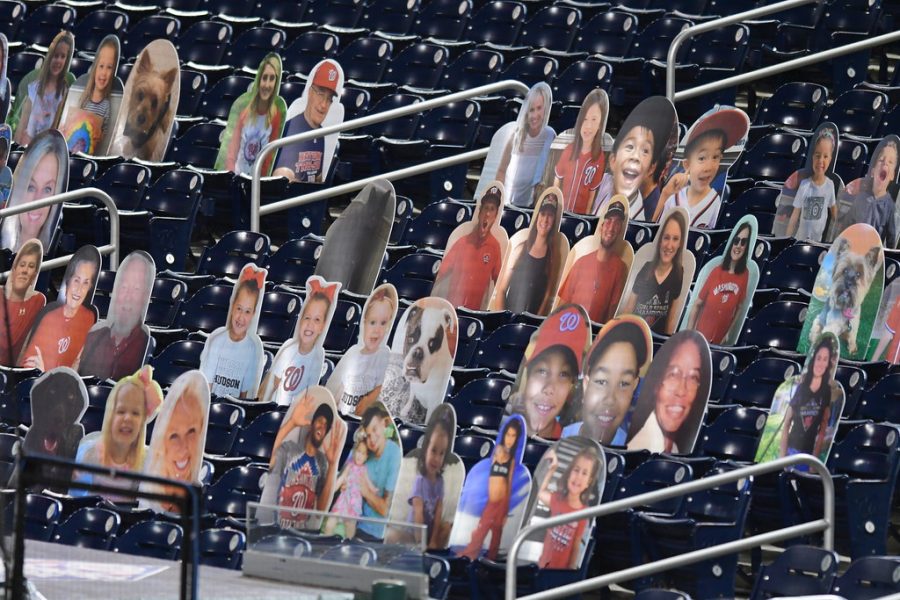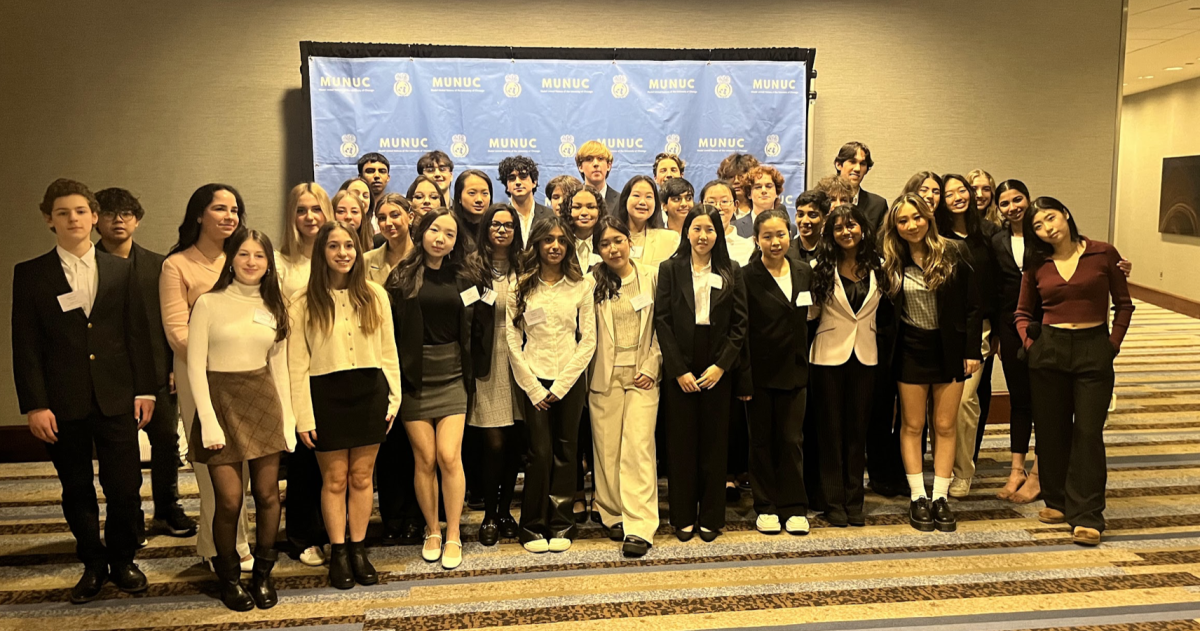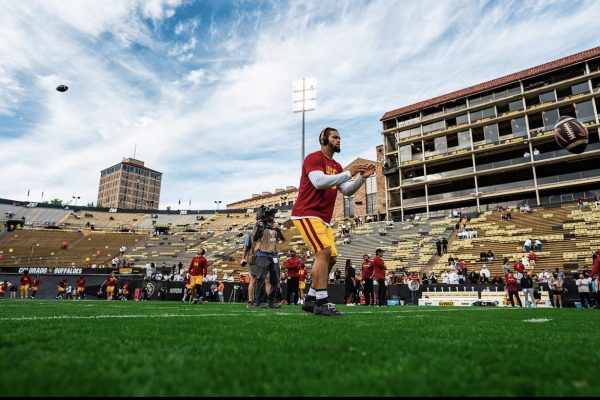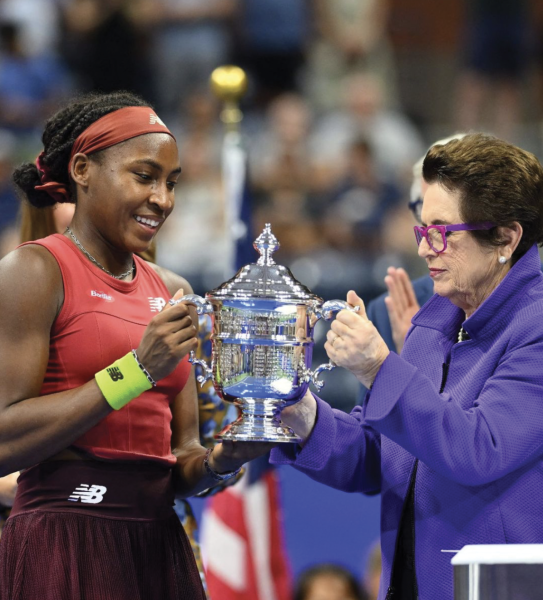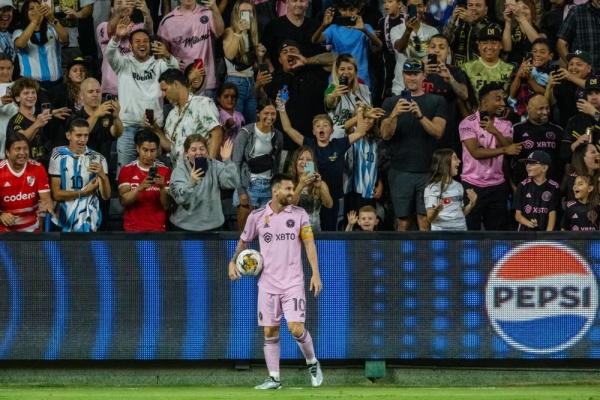The dilemma facing professional sports
Photo by Creative Commons
Washington Nationals Stadium, Nationals Park, is filled with cardboard cutouts in place of in-person fans.
December 11, 2020
From the first pitch to the initial kickoff, a sports game’s beginning is just the start of the fans’ adrenaline; however, as COVID-19 continues to sweep the nation, sports have been completely altered for many die-hard fans. With new regulations implemented in Major League Baseball, the National Football League, and the National Hockey League, many fans are stuck at home watching games on their TVs instead of going to the games in person. COVID-19 has not only taken away most of the in-person attendance, but the overall viewings of the games have gone significantly down since the start of the pandemic, affecting both the industry and the players.
In the past few months, many sports franchises have been trying to make the best out of what they can do. Professional baseball and hockey have successfully completed their seasons inside an isolation bubble they created. Yet as ratings decrease, it’s clear that not as many watched their games. Football season, kicking off in September, has not created a bubble as some teams allow fans to watch in person. The games are held across the country, increasing exposure risks. Football ratings have gone down as well.
The World Series, baseball’s championship series, has an average rating of 38 million views; the 2020 World Series has gone down to 9.6 million views, an all-time low. No fans were allowed in any of the stadiums, which would suggest that those fans would watch the games from home. However, the views have still experienced an extreme drop this year. Many fans are devastated that fewer people have watched baseball this season. Mimi Osborne ‘22, a big fan of the Baltimore Orioles, said, “Baseball is a sport that connects people. In American households, baseball is something that everyone can talk about. It is simply heartbreaking that the amount of people watching baseball has plummeted since COVID-19 started.”
Likewise, the NHL did not permit fans in any of the rinks during the Stanley Cup playoffs. There is normally an average of 5.33 million viewers for the Stanley Cup; however, the number dropped to 2.15 million viewers in 2020. Similarly to baseball, the loss of in-person attendance is not the cause of the decrease in ratings.
Contrary to the MLB and NHL, the NFL has taken different measures to ensure the safety of everyone. With stadiums allowing for over 60,000 people, some NFL teams have opened up the opportunity for a small capacity of 5-10% of fans to come to the games. However, even with a small number of fans allowed to come to the games, the ratings and views have gone down this season. There is a 6% decrease in the number of viewers on television per week, which is still a significant decline in viewers compared to previous years.
Many fans have been staying up to date with the scores but have not been watching the games. One explanation for the loss of watchers is that the restriction of in-person attendance has also taken away the experience and atmosphere of watching it at home. The excitement from the fans at the games translates into the homes of the viewers. Kyle Koncz, Assistant Dean of Admission and Head Varsity Boys Basketball Coach, said, “The atmosphere and energy of the games isn’t the same without fans, which at times takes away from the experience of watching.”
Another experience that has been lost is the social aspect of watching games. Ben Wetherbee, Assistant Dean of College Counseling, mentioned, “a lot of the enjoyment I get out of watching sports is experiencing them in the vicinity of friends and when that social component of the watching experience is removed, I tend to watch less.”
Not only has the change in atmosphere contributed to the loss of viewers, but with everything that’s been happening in 2020 people are not focused on sports. It may seem like people would have an increase in time to watch the sports, but even if there is the time, there are larger problems people have been paying attention to. 2020 has brought a variety of things that viewers have been paying attention to; an on-going pandemic, a rise of racial awareness and movements, and the election. Koncz said that the events of 2020, “drew attention away from the sports on television.” Sports have, therefore, become lower on the “to-do” list for many people. On top of that, coming out of a long quarantine of watching Netflix, many people have not spent as much watching sports as they have spent playing them outside. Koncz mentions how he “tried to spend as much time as possible outdoors during the last few months, away from television and trying to be active after being stuck inside for so long.”
With the loss of viewers, the industry and the athletes have been affected as well. There is an obvious loss in revenue from ticket sales to food and drink consumption in fan shops. Wetherbee mentioned how this really hurts the small business and communities that support these franchises. Not only has it affected the franchise, but it has affected the athletes. The athletes thrive off of the energy that the crowd creates. Koncz mentioned how “fans give players energy, at both home and away games, and I think the sports industry has really missed that during the pandemic.” Hopefully, the sports industry will get back to normal, so all the fans can enjoy watching the games again and the sports industry can rebound.

